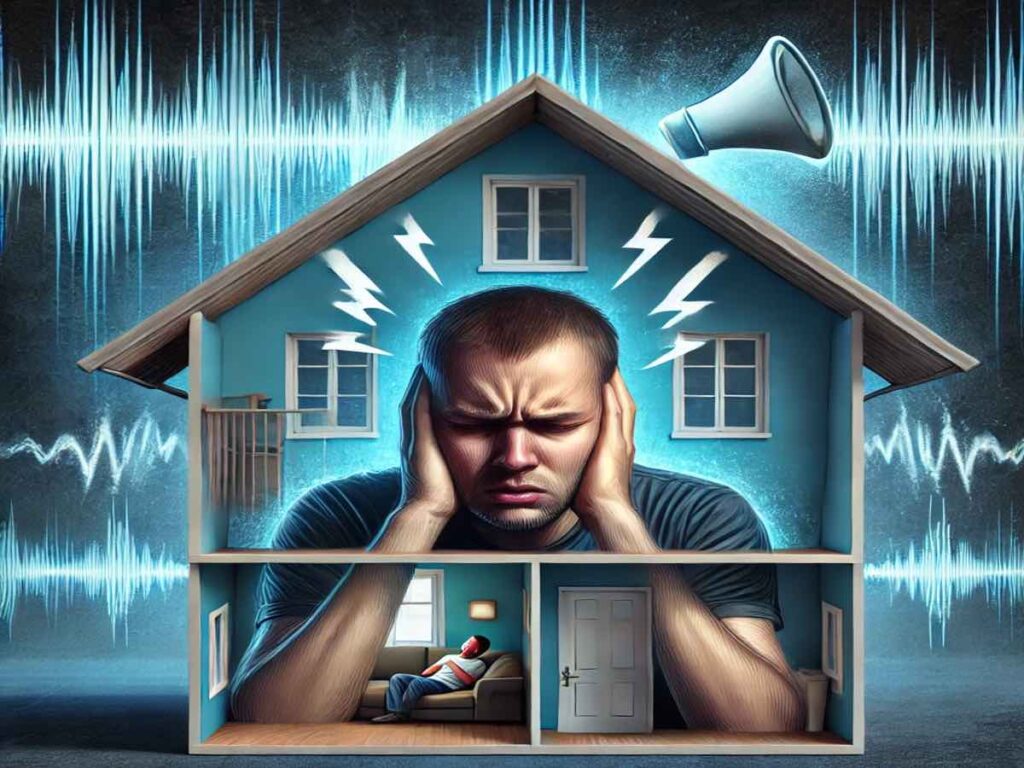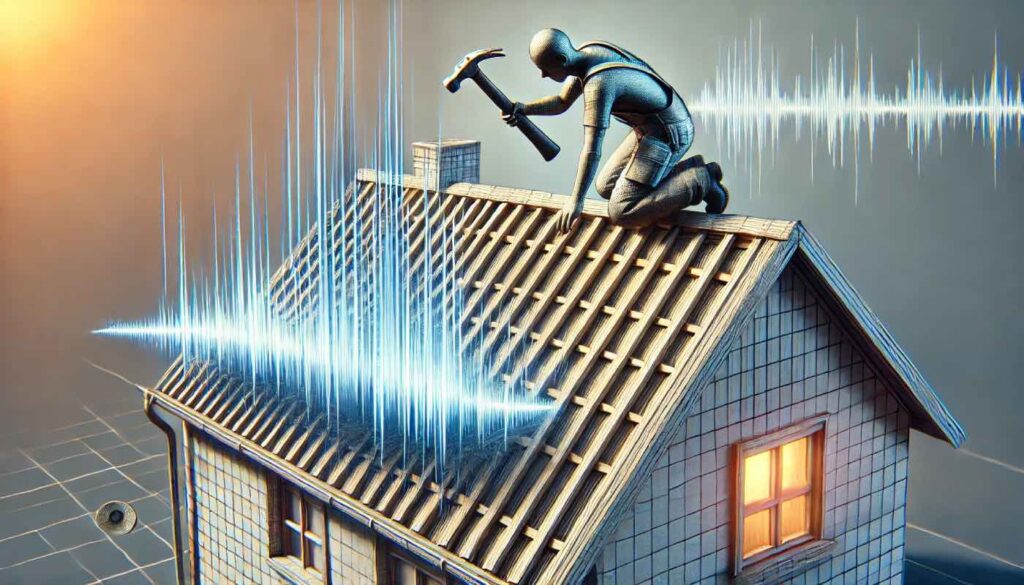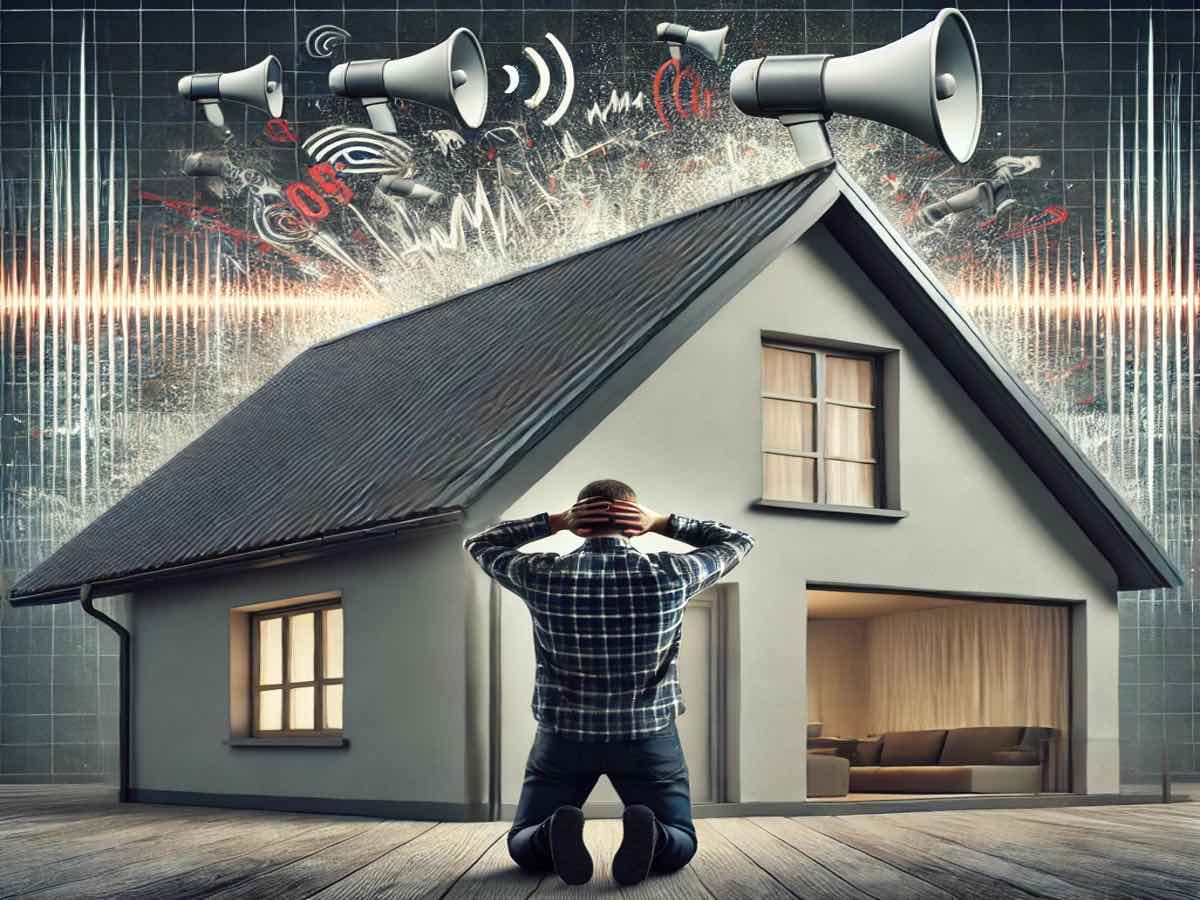Start by taking into account the noise disturbance, which answers the question for many. The noise from a typical roof replacement can hit 85 decibels – that’s as loud as standing next to a busy city street.
A roofing expert with 40 years of hands-on experience has watched countless homeowners struggle with a vital question: should they stay put during their roof replacement? Some families stick around through the project, while others pack up and leave temporarily.
Several factors shape this decision. A full roof replacement usually takes 2-4 days and brings plenty of noise, debris, and safety concerns with it. Homeowners need to think about their work setup, what their family needs, how their pets might react, and whether they can handle the construction buzz.
This detailed guide dives into the safety side of roof replacement. It helps readers decide if staying home makes sense during their project. Readers will learn everything from simple safety risks to ways they can create protected spaces in their homes before the first shingle comes off.
Understanding Roof Replacement Safety Basics
Roof replacement comes with important safety concerns that homeowners must understand. Homeowners need to know the risks and work patterns to make smart decisions about staying home during the work.
Key Safety Risks During Roof Work
Roofing ranks as the fourth most dangerous construction job in the United States. Here are the most common hazards:
- Fall-related incidents from heights above 6 feet
- Debris falling from roof edges
- Exposure to construction noise and dust
- Electrical hazards near power lines
- Risk of structural compromise
Typical Duration and Work Patterns
A standard roof replacement takes one to three days. Several factors affect how long the job takes:
| Factor | Impact on Duration |
|---|---|
| Weather Conditions | Additional time needed in cold weather (below 40°F) |
| Roof Complexity | Multiple facets and steep pitches extend timeline |
| Daylight Hours | Shorter days in winter reduce working time |
| Material Type | Premium materials require longer installation |
Impact on Home Structure and Stability
Roof replacement affects your home’s entire structure. Old or damaged roofs let moisture seep in, which can lead to rotting wood, mold, or mildew. Professional contractors check and fix the roof decking to strengthen the foundation that supports roofing materials.
Contractors must spread weight evenly across the roof’s framework during installation. This method reduces stress on the structure and helps it last longer. Modern roofing materials offer both efficiency and durability.
Ongoing roof problems can create serious structural issues. Leaks that go unfixed may damage rafters, ceiling joists, and wall framing. The worst cases might lead to ceiling or wall collapse without proper repairs.
Evaluating Your Living Situation
You need to make an informed choice about staying home during roof replacement by looking at several vital factors. Your living situation plays a big role in this decision, so you’ll need the full picture of what works best for you.
Remote Work Considerations
Remote workers face real challenges during roof replacement projects. Studies show that constant hammering and construction noise can cut work productivity by up to 66%. The noise levels usually peak between 7 AM and 4 PM. This creates problems if you need quiet time for virtual meetings or focused work.
| Time of Day | Noise Impact Level | Recommended Work Location |
|---|---|---|
| Morning | Highest | Alternative workspace |
| Midday | Moderate | Quiet room away from roof |
| Afternoon | Variable | Remote office/library |
Family and Pet Safety Assessment
Your family’s needs and pet safety deserve extra attention when you decide whether to stay during roof replacement. Pets that are sensitive to noise might feel stressed, as shown by these common reactions:
- Excessive barking or hiding behaviors
- Changes in eating patterns or anxiety
- Increased aggression or fearfulness
- Unusual clinginess or nervousness
Most experts suggest finding different arrangements for pets while the work happens, especially if your animals get scared during thunderstorms or loud noises.
Medical and Health Factors
Your health should be a vital part of this decision. This becomes even more important if you have breathing problems or dust sensitivities. Research shows that roofing projects can release large amounts of dust and particles into your home.
Everything about your health matters, including:
- Pre-existing respiratory conditions
- Sensitivity to construction materials
- Stress-related health issues
- Sleep requirements, especially if you work night shifts
A temporary move might help if you have medical concerns, since construction debris can affect your indoor air quality even with safety measures in place. You should talk to your doctor if you have specific health conditions that construction work might make worse.

Creating a Safe Living Space
Creating a secure living environment during roof replacement needs careful planning and organization. Professional roofing crews usually mark specific areas in the home where residents can safely continue their daily activities.
Designating Safe Zones in Your Home
Protected areas within your home help maintain normal life during construction. You should set up a dedicated space that meets these criteria:
| Safe Zone Requirements | Purpose |
|---|---|
| Away from roof work area | Minimize exposure to debris |
| Interior rooms | Reduce noise impact |
| Clear access paths | Enable easy movement |
| Protected windows | Guard against dust |
Setting Up Temporary Living Arrangements
You need to prepare your living spaces carefully. The roofing crew should tell you which areas to avoid during the replacement process. Key preparation steps include:
- Removing valuable items from walls and shelves
- Securing important documents and irreplaceable items
- Creating designated pet-proof areas
- Establishing clear pathways for worker access
Most roof replacements take between one to three days, so proper temporary arrangements will keep you comfortable and safe during this time.
Managing Utilities and Services
The roofing team needs coordination to maintain essential services. You should prepare for potential utility adjustments.
Power access is vital because roofing contractors need electrical outlets for their equipment. The crew needs steady access to:
- Exterior power sources
- Water supply
- Communication systems
Professional roofing teams make safety their top priority while working around occupied homes. Taking pictures of your property’s condition beforehand helps track the state of utilities and fixtures.
Good planning and communication with your roofing contractor will help maintain a safe and functional living space throughout the project. This approach will keep residents safe and help the roofing crew work efficiently.
Daily Safety Protocols
Safety protocols are the life-blood of successful roof replacement projects. Professional roofing crews stick to strict daily procedures that keep workers and residents safe.
Morning Safety Checks
Roofing crews start each day with quick 5-10 minute safety talks to spot hazards and review safety measures. The morning inspection checklist has:
| Safety Check Item | Action Required |
|---|---|
| Weather Assessment | Monitor forecast for safe working conditions |
| Equipment Inspection | Verify tools and safety gear functionality |
| Work Area Review | Clear debris and identify potential hazards |
| Access Points | Confirm safe entry and exit routes |
Professional roofers stay off roofs in bad weather because sudden changes can create dangerous situations. They check all equipment carefully and never use damaged tools.
Communication with Roofing Crew
Clear communication is vital to a safe roofing project. A lead contact person manages several communication channels:
- Phone calls and text messages
- Email updates
- On-site discussions
- Emergency contact information
Homeowners should keep open lines of communication with their roofing contractor during the project. This helps address safety concerns quickly and coordinates the project better.
Emergency Response Plans
Every roofing project needs a well-laid-out emergency response system. The plan should spell out clear steps for different scenarios:
- Immediate response protocols for accidents
- Evacuation procedures if needed
- Medical emergency handling
- Weather-related contingencies
Employers must keep rescue equipment accessible because falls pose the biggest risk in roofing work. The response plan outlines specific steps for each type of emergency, and designated staff members learn rescue procedures.
The construction industry ranks among the most dangerous sectors. Roofers hold the fifth spot in America’s most dangerous jobs. These numbers show why strict safety protocols matter so much to protect workers and residents during roof replacement projects.

Protecting Your Property
Your property needs complete safeguards inside and out during roof replacement. Professional roofing crews use multiple protection layers to keep your possessions safe throughout the project.
Interior Protection Measures
The attic’s protection serves as your main defense against roofing debris. Your roofing contractor should put these protective measures in place:
| Protection Area | Method | Purpose |
|---|---|---|
| Attic Space | Tarp/Plastic Sheeting | Shield from debris |
| Ceiling | Containment Systems | Prevent dust infiltration |
| Top Floor | Protective Barriers | Guard against vibration |
Dust and debris will find their way into attics during roof replacement. Contractors usually install temporary horizontal barriers under the roof deck to keep the space clean.
Exterior Safety Preparations
Exterior protection plays a vital role in keeping your property intact. Professional contractors use these key safeguards:
- Cover landscaping and flower beds with tarps or plastic sheeting
- Place wooden boards at strategic angles to protect HVAC units
- Install fresh tarps over pools to prevent fiberglass contamination
- Create designated pathways to move workers and materials
Your contractor should use magnetic sweeps at least three times during the project to collect stray nails and materials. This approach keeps outdoor spaces safe long after the work ends.
Valuable Items Security
Protecting valuable possessions needs good planning. You should take these steps to secure your belongings:
- Remove or secure hanging items:
- Pictures and mirrors from top-floor walls
- Decorative items from shelves
- Wall-mounted electronics
- Establish protected storage:
- Lock away important documents
- Secure jewelry and valuable items
- Relocate fragile possessions
- Create buffer zones:
- Clear work zones of furniture and equipment
- Remove patio furniture and grills
- Relocate vehicles from driveways and garages
Professional roofing teams know that property protection goes beyond the immediate work area. They use tarps and plywood to shield sensitive zones. This systematic approach keeps your home safe while letting the roofing crew work quickly.
Should I Stay Home During Roof Replacement Frequently Asked Questions
Can you stay in the house during roof replacement?
Yes, you can typically stay in the house during a roof replacement, but it may be uncomfortable. The noise from the tools and the presence of workers can create a disruptive environment, especially if the roof is being completely replaced. If you need a quieter environment or have safety concerns, it might be best to stay elsewhere for a day or two.
Do I need to be present for roof replacement?
No, you don’t necessarily need to be present for a roof replacement, but it’s a good idea to be available for questions or concerns. If you are not around, make sure to communicate with the roofing company about where to access your property and any specific instructions regarding the project. Most roofing companies can proceed without you, as long as you’ve already discussed details beforehand.
Do you have to move out when the roof is replaced?
No, you do not have to move out when the roof is replaced. While the project can cause some noise and inconvenience, it’s usually not necessary to leave your home. However, if the roofing work is extensive or you have small children or pets who might be disturbed, you may choose to stay somewhere else temporarily.
How disruptive is getting a new roof?
Getting a new roof can be fairly disruptive due to the noise, dust, and workers moving around. The sound of hammering, cutting, and the movement of materials can create a noisy environment, which might be bothersome during the day. However, the disruption is typically limited to the workday hours and usually doesn’t last more than a few days.
Does a roofer need to come inside your house?
In most cases, a roofer does not need to come inside your house, especially if only the roof is being replaced. However, if there are issues like damaged ceilings or ventilation that need attention, the roofer might need to enter your home. It’s always good to discuss the scope of work beforehand to know if any inside access is necessary.
How messy is a roof replacement?
A roof replacement can be quite messy due to the debris from the old roofing materials. There will likely be shingles, nails, and other materials falling from the roof during the removal and installation process. However, a professional roofing company will typically take steps to minimize the mess, such as using tarps and cleaning up the area after the job is done.
